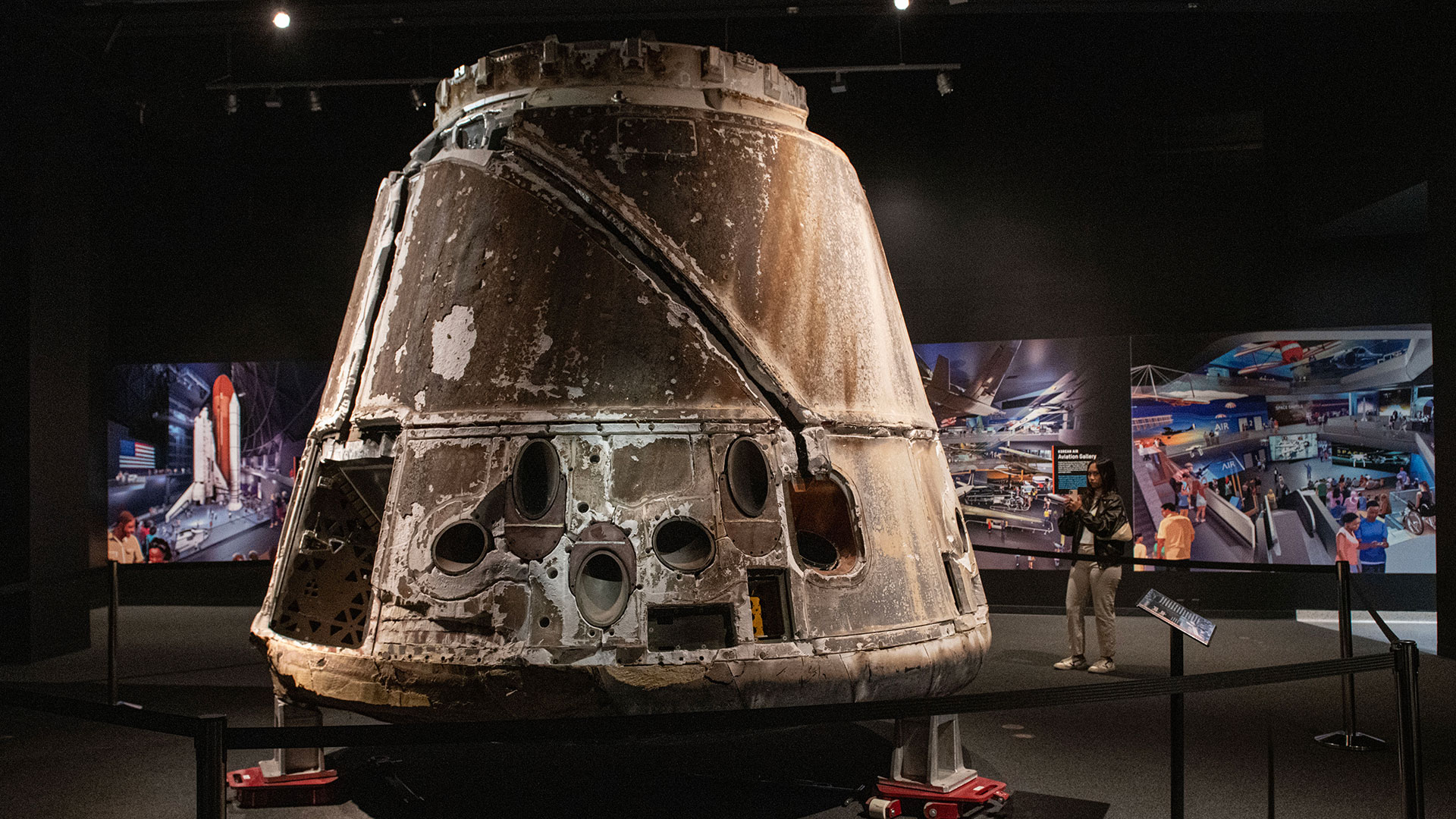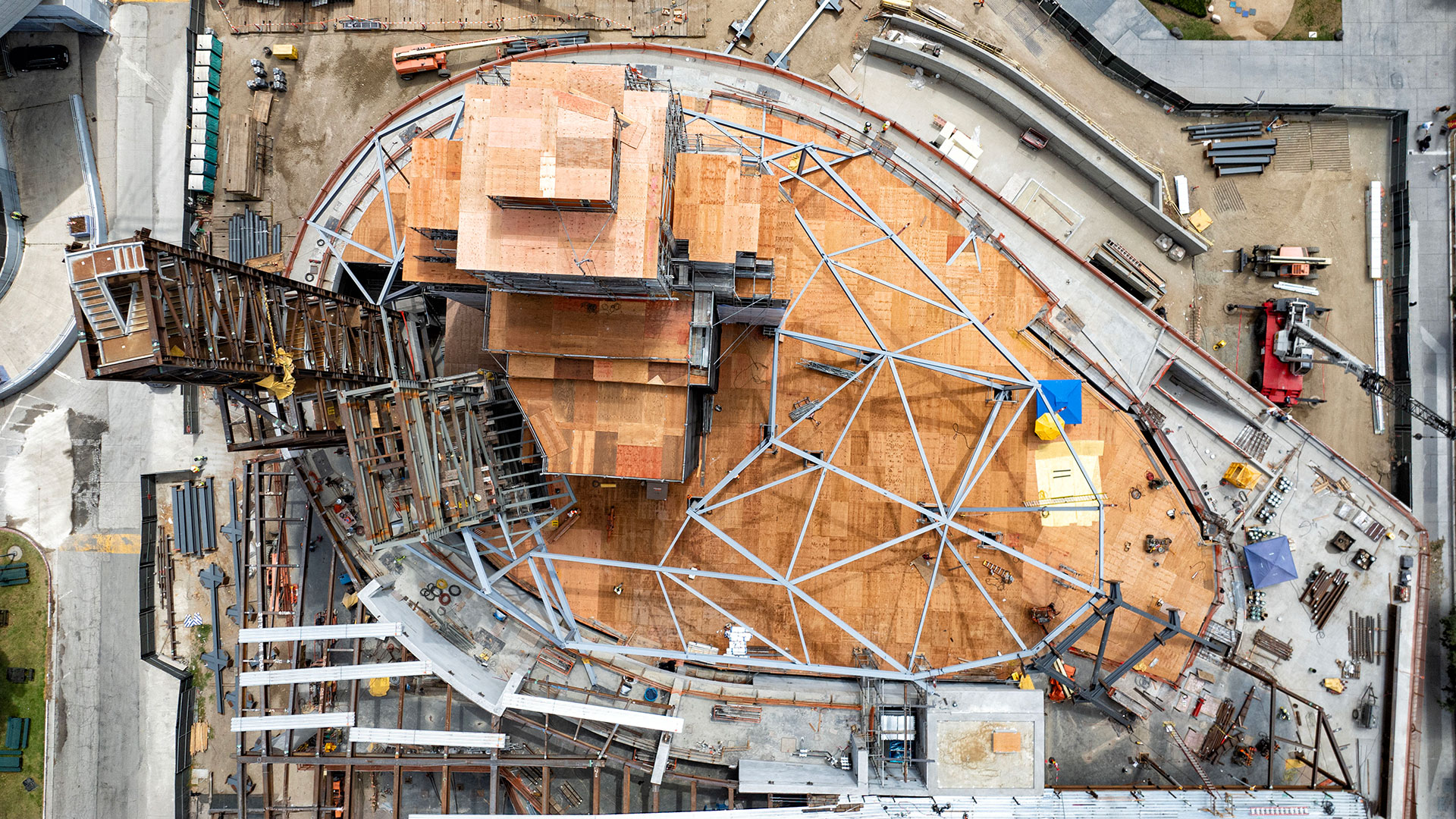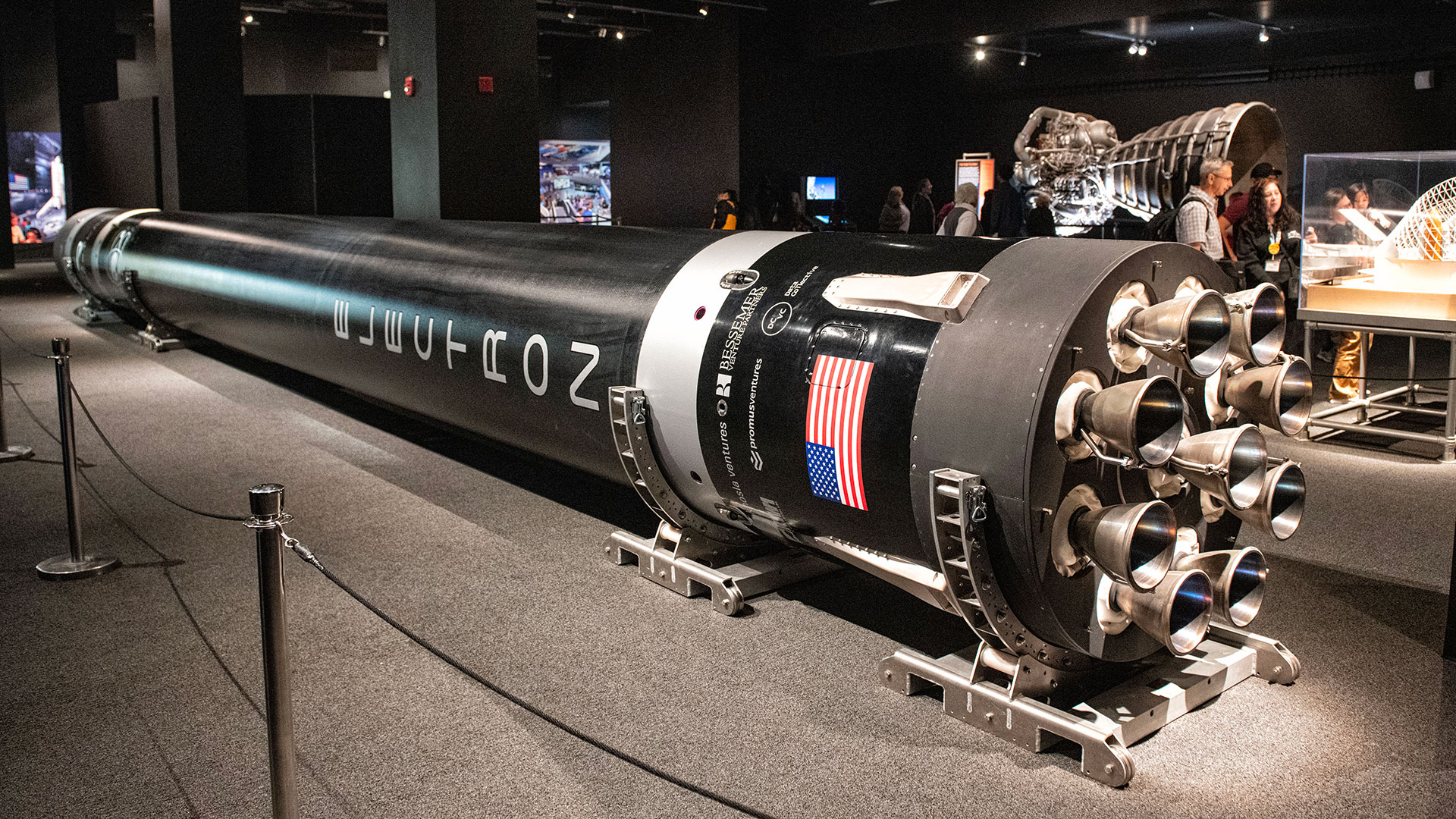SpaceX Dragon capsule on display ahead of joining space shuttle LA exhibit
The California Science Center debuts Dragon, Electron and other aerospace artifacts on display.

What do you do when your star attraction — a retired space shuttle — is under wraps and out of view from the public for the next few years? If you're the California Science Center, you land another spacecraft.
The Los Angeles museum and educational destination on Monday (June 24) announced the addition of a SpaceX Dragon capsule to its collection. The flown cargo vehicle will be displayed with NASA's space shuttle Endeavour in the science center's new Samuel Oschin Air and Space Center when that building is complete. Until then, the capsule can be viewed as part of a "Work in Progress" gallery, now open to the public.
"As we watch the exciting progress of the new Samuel Oschin Air and Space Center being constructed around the space shuttle stack, we celebrate our journey through the Work in Progress gallery, showcasing new artifacts while reflecting on the incredible feats that brought us to today," said Jeffrey Rudolph, president and CEO of the California Science Center, in a statement.

The Dragon on display was the eighth production model out of 14 first-generation cargo vehicles that SpaceX built to fly supplies to and from the International Space Station. The capsule was the first Dragon to launch into orbit and then return to a splashdown on Earth three times, logging almost 99 days on commercial resupply services (CRS) missions contracted by NASA.
The science center's Dragon launched for the first time in 2015 on SpaceX's sixth (CRS-6) flight, which carried among other cargo a commercially designed Italian espresso maker and 20 live mice that were tested and studied by the Expedition 43 crew on the space station. Outfitted with a new heat shield, the capsule then flew again in 2017, this time bringing a Budweiser barley germination and malting experiment among its CRS-13 cargo for the station's Expedition 53 and 54 crews.
The Dragon lifted off on its third and last flight in 2019, delivering a new docking adapter for commercial spacecraft, a bio-fabrication facility for 3D printing organ-like tissues, a materials investigation for Goodyear Tire, a prototype Adidas soccer ball and a Nickelodeon "Slime in Space" educational outreach payload as part of the CRS-18 mission in support of the Expedition 60 and 61 crews.

Exhibited near the Dragon in the new gallery is a Rocket Lab Electron, a small orbital-class launch vehicle of the same type that successfully lifted off on the company's 50th mission on Thursday (June 21). The 60-foot-long (18 m) rocket is powered by 10 Rutherford engines, which were designed and 3D printed in Long Beach, California.
Together with the Dragon, the Electron will help represent the commercial sector's contributions to space exploration in the Oschin Air and Space Center.
The "Work in Progress" exhibition also features a large wall projection that traces construction of the new center, which when complete in the next few years will become the permanent home of the space shuttle Endeavour, as well as 100 other aviation and aerospace artifacts. The wall display is augmented by an architectural building model and artist's renderings of the major galleries that will be part of the 200,000-square-foot (18,600 square meters), $400 million addition to the science center.
A time-lapse film also plays in the room detailing the six-month process of lifting and installing Endeavour into its future facility to create the world's only authentic space shuttle stack in its "ready to launch" position. Since completing the "Go For Stack" effort in January, the entire shuttle stack has been covered with plastic, scaffolding and wooden boards, protecting it as the building is erected around and above it. The framework, or "diagrid," that will give the air and space center its sweeping skyward shape has also begun being installed.

Visitors touring the Work in Progress gallery will also find several favorites from the former Samuel Oschin Endeavour Pavilion, where the winged orbiter was previously displayed from 2012 to late last year. Guests can now again experience an interactive video tour of the interior of Endeavour and view an authentic space shuttle main engine.
Also back on display is an exhibition of more than 80 photographs that chronicle Endeavour's final ferry flight over California and its 68-hour road trip through the streets of Los Angeles 12 years ago.
The California Science Center is now only the third facility where the public can see a SpaceX Dragon capsule on display, joining the Kennedy Space Center Visitor Complex in Florida and Griffin Museum of Science and Industry in Chicago. SpaceX also exhibits a flown Dragon in its Hawthorne, California headquarters.
One of the three Falcon 9 rocket first stages that launched the California Science Center's Dragon is also on public display. The booster that lifted off on CRS-13 is on outdoor exhibit at Space Center Houston in Texas.
Follow collectSPACE.com on Facebook and on Twitter at @collectSPACE. Copyright 2024 collectSPACE.com. All rights reserved.
Get the Space.com Newsletter
Breaking space news, the latest updates on rocket launches, skywatching events and more!
Join our Space Forums to keep talking space on the latest missions, night sky and more! And if you have a news tip, correction or comment, let us know at: community@space.com.

Robert Pearlman is a space historian, journalist and the founder and editor of collectSPACE.com, a daily news publication and community devoted to space history with a particular focus on how and where space exploration intersects with pop culture. Pearlman is also a contributing writer for Space.com and co-author of "Space Stations: The Art, Science, and Reality of Working in Space” published by Smithsonian Books in 2018.In 2009, he was inducted into the U.S. Space Camp Hall of Fame in Huntsville, Alabama. In 2021, he was honored by the American Astronautical Society with the Ordway Award for Sustained Excellence in Spaceflight History. In 2023, the National Space Club Florida Committee recognized Pearlman with the Kolcum News and Communications Award for excellence in telling the space story along the Space Coast and throughout the world.










